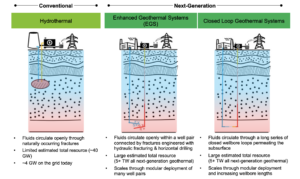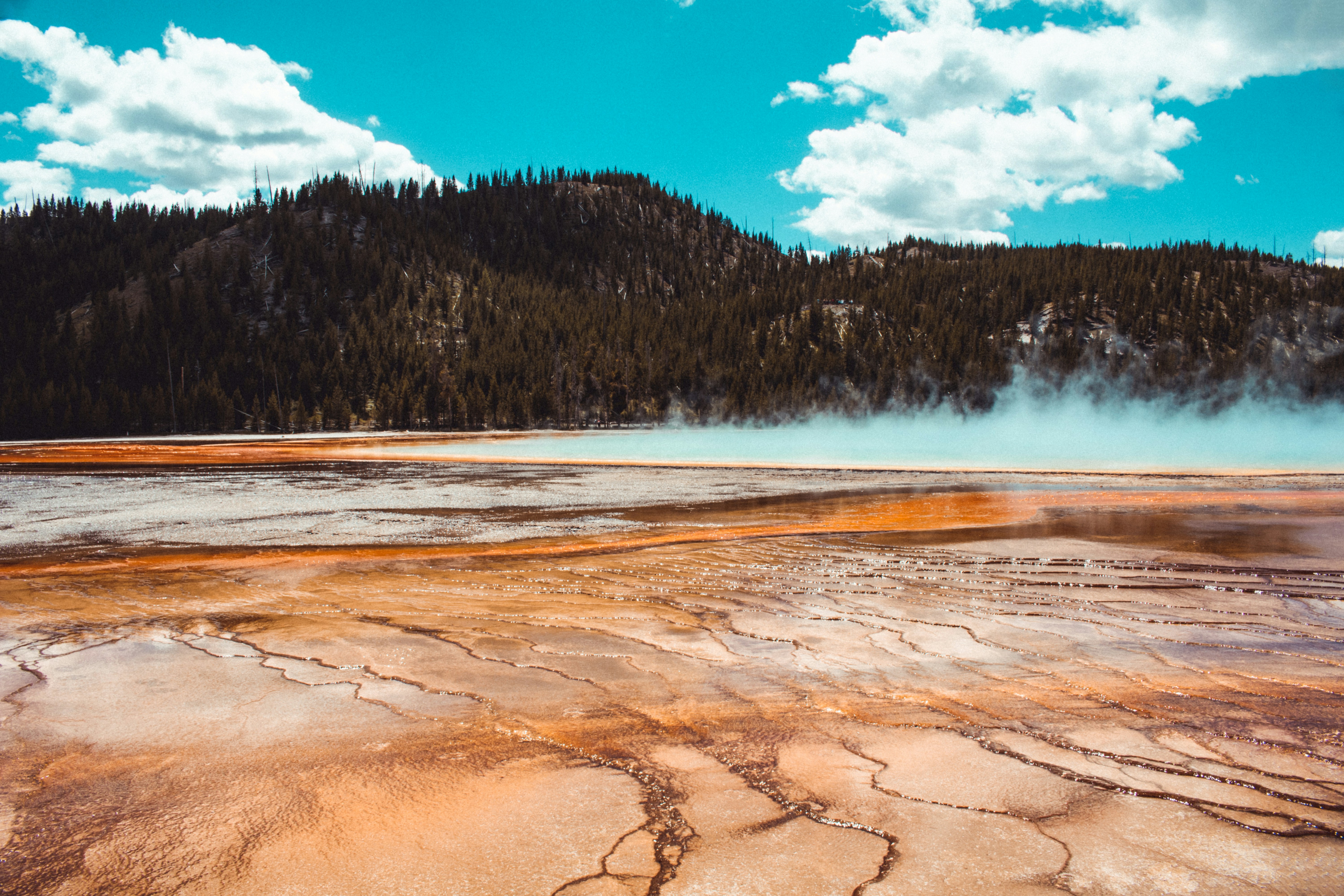The quest for sustainable and reliable energy sources has never been more critical. With the urgent need to reduce carbon emissions and combat climate change, renewable energy solutions are at the forefront of the energy transition. Among these, geothermal energy is emerging as a powerful contender that only accounted for 0.4% of power generation in the United States (US) in 2023, offering the promise of clean, consistent, and 24/7 carbon-free energy (CFE). Recent high-profile announcements of and investments in new geothermal initiatives highlight its growing role in the US clean energy landscape, making it an exciting time to explore what geothermal energy has to offer.
What is Geothermal Energy?
Geothermal energy is heat derived from the Earth’s sub-surface, harnessed for various applications, including electricity generation and direct heating. This renewable energy source taps into the thermal energy stored in the Earth’s crust, utilizing steam and hot water reservoirs. The basic premise involves drilling wells into geothermal reservoirs to bring hot water and steam to the surface, which then drive turbines connected to electricity generators. In practice, there are three primary conventional forms of geothermal energy plants.
Forms of Geothermal Energy
- Dry Steam Plants: These are the oldest type of geothermal power plants, where steam from underground is directly used to turn the turbines.
- Flash Steam Plants: These plants take high-pressure hot water from the ground, which turns to steam when the pressure is reduced, and the steam drives the turbines.
- Binary Cycle: This type of plant uses hot water to heat a secondary fluid with a lower boiling point than water, which vaporizes and drives the turbines.
In addition to conventional hydrothermal forms of geothermal, there’s emerging “next generation” geothermal systems such as enhanced geothermal systems and closed loop geothermal systems. The US Department of Energy is exploring the promise of next-gen geothermal strategies which “leverage technologies developed by oil & gas to engineer humanmade reservoirs from ubiquitous hot rock, rather than hunting for naturally-occuring reservoirs in unique locations” and projects that next-gen geothermal could account for 90 gigawatts (GW) of generation in the US by 2050 (note: in 2023 it accounted for 3.7 GW).

Image Source: US DOE’s report titled “The Pathway to: Next-Generation Geothermal Power Commercial Liftoff”
Why is Geothermal Gaining Popularity?
Several factors are contributing to the rising interest in geothermal energy:
- Recent Deals and Investments: Notable partnerships and projects are putting geothermal energy in the spotlight. For instance, Fervo Energy’s deal with Southern California Edison aims to bring new geothermal capacity to the grid, while NV Energy and Google (and Fervo) are collaborating on geothermal projects in Nevada as part of a proposed green tariff program. These investments signal confidence in geothermal’s potential to provide reliable and sustainable energy.
- 24/7 Carbon-Free Energy Potential: Unlike solar and wind, which are intermittent, geothermal energy offers a continuous and stable power supply. This makes it an attractive option for utilities and corporate offtakers looking to achieve round-the-clock carbon-free energy.
The 24/7 CFE Potential of Geothermal
Geothermal energy’s ability to provide consistent power generation sets it apart from other renewable sources. While solar energy peaks during daylight hours, geothermal can operate continuously, providing a stable and reliable energy supply. This reliability is crucial for balancing the grid and ensuring a steady flow of electricity, which is particularly beneficial for utilities managing large-scale energy systems.
Limitations of Geothermal
Despite its advantages, geothermal energy faces several challenges:
- Regional Constraints: Geothermal resources are geographically limited to areas with significant tectonic activity, such as the western United States, Iceland, and parts of Southeast Asia.
- Costs: The initial cost of drilling and setting up geothermal plants can be high, although these costs are offset by low operational expenses and long-term stability.
Utilizing Geothermal for Clean Energy Claims/Green Claims
For utilities and corporate offtakers, making credible green claims is essential. Geothermal energy can play a pivotal role here, supported by clean energy certifications and Renewable Energy Certificates (RECs). Different states and markets have varying standards for RECs, such as GRECs in Maryland and thermal RECS (TRECs) in New Hampshire. Additionally, the Granular Certificate protocol through EnergyTag provides a framework for more accurate tracking and allocation of renewable energy claims, ensuring that geothermal energy’s contributions are properly accounted for.
Looking Ahead
As the demand for clean energy grows, adding more geothermal capacity to the grid is vital. Geothermal energy not only supports utilities and corporate offtakers in achieving their green claims and net-zero targets but also enhances the overall resilience and sustainability of the energy system. Effective data tracking and management are essential for optimizing Energy Attribute Certificate (EAC) allocation and maintaining transparency in green claims.
Conclusion
Geothermal energy presents a compelling case for inclusion in the clean energy mix. Its benefits, such as reliability, 24/7 carbon-free energy potential, and alignment with green energy certifications, make it an attractive option for utilities, gentailers, and corporate offtakers. As we move towards a sustainable energy future, geothermal energy’s role will be increasingly important, and now is the time to consider its integration into your clean energy strategies.
Embrace the power of Earth’s heat and explore the potential of geothermal energy in your journey towards a carbon-free future.

